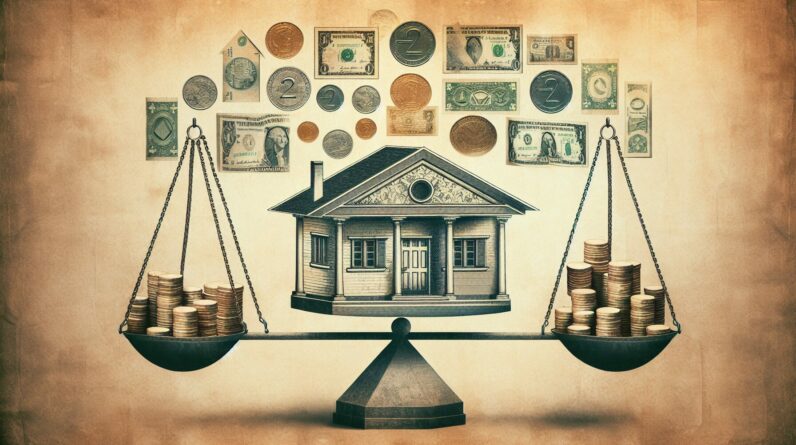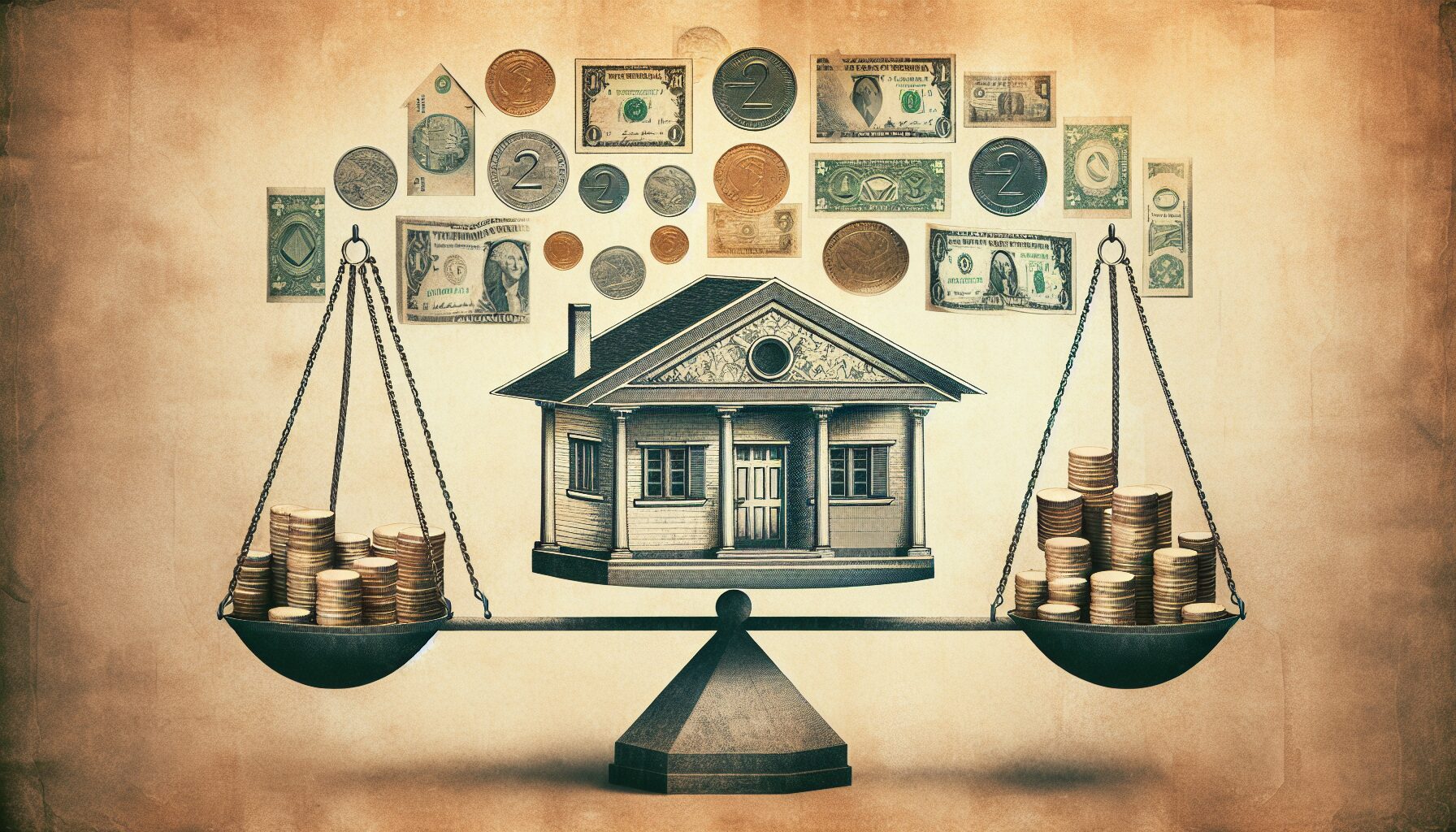
Have you ever wondered why a home loan is referred to as a mortgage? Well, the answer lies in its historical roots. Dating back to the Latin word “mortuus,” which means dead, the term mortgage originated during the Middle Ages when landowners would borrow money using their land as collateral. If they failed to repay the loan, the lender would take possession of the land, figuratively rendering it “dead” to the borrower. Today, while the concept remains the same, this friendly guide explores the fascinating history behind why we still call a home loan a mortgage. So, let’s uncover the story together!
Table of Contents
The Origins of the Term Mortgage
Etymology of the Word Mortgage
The term “mortgage” has an interesting etymology that dates back to the late Middle Ages. It is derived from the Old French word “mort gaige,” which translates to “dead pledge.” This peculiar choice of words may seem confusing at first, but it actually refers to the fact that the pledge is considered “dead” once the debt is fully repaid.
Historical Context of Mortgage
In order to understand the origin of the term mortgage, it is essential to delve into the historical context in which it emerged. During the medieval era, land ownership and property rights were paramount, and individuals often found themselves in need of financial assistance. In this setting, mortgages became a common way for landowners to secure loans by offering their property as collateral.
Definition and Basics of a Home Loan
Definition of a Home Loan
A home loan is a type of loan that is specifically designed to help individuals or families purchase a residential property. It provides the necessary funds to buy a home, allowing individuals to fulfill their dream of homeownership. The loan amount is typically repaid over a set period of time, including interest charges.
Characteristics of a Home Loan
There are several key characteristics that differentiate a home loan from other types of loans. Firstly, a home loan is a secured loan, meaning that the property being purchased serves as collateral for the loan. Additionally, home loans generally have longer repayment terms compared to other loans, often spanning over several decades. This extended term allows borrowers to make manageable monthly payments.

Understanding the Mortgage Process
Applying for a Mortgage
The process of applying for a mortgage can initially seem intimidating, but with the right guidance, it can be more straightforward than you might think. It begins by gathering the necessary documents, such as proof of income, tax returns, and bank statements. Next, you will fill out a mortgage application form, providing details about your financial situation. Once submitted, the lender will review your application and assess your eligibility for a mortgage.
Mortgage Approval Process
After applying for a mortgage, the lender will evaluate your financial information, credit history, and the value of the property you intend to buy. This evaluation is crucial in determining whether or not you qualify for a mortgage. If approved, the lender will provide you with the terms and conditions of the loan, including the interest rate and repayment schedule.
Types of Mortgages
There are various types of mortgages available, each tailored to meet different borrower needs. Some common types include fixed-rate mortgages, adjustable-rate mortgages, government-insured mortgages, and jumbo mortgages. It is important to research and understand the different options available in order to choose the one that best suits your financial circumstances and long-term goals.
Interest Rates and Terms
Interest rates and loan terms play a significant role in the overall cost and affordability of a mortgage. Different lenders offer different interest rates, and it is essential to compare rates and terms to ensure you secure the most favorable mortgage for your financial situation. Loan terms can greatly impact monthly payments, so it is important to consider both the short-term and long-term implications.
Comparison Between Home Loans and Personal Loans
Differences in Purpose
While both home loans and personal loans provide individuals with access to funds, they serve different purposes. Home loans are designed specifically for the purpose of purchasing or refinancing a residential property. In contrast, personal loans can be used for a variety of purposes, such as debt consolidation, home renovations, or other personal expenses.
Secured vs. Unsecured Loans
One of the key distinctions between home loans and personal loans is that home loans are secured by the property being financed, while personal loans are typically unsecured. This means that in the case of a home loan, if the borrower defaults on their payments, the lender has the right to foreclose on the property and recover their investment. Personal loans, on the other hand, do not require collateral and therefore carry higher interest rates to compensate for the increased risk to the lender.
Interest Rates and Terms
Interest rates and loan terms also differ between home loans and personal loans. Home loans generally have lower interest rates and longer repayment terms due to the larger loan amounts and the collateral provided by the property. Personal loans, on the other hand, typically have shorter repayment terms and higher interest rates since they are unsecured loans.

Why the Term ‘Mortgage’ is Used for Home Loans
Historical Association
The term “mortgage” has been used for home loans due to its historical association with the practice of pledging property for a loan. This connection dates back centuries, to times when landowners needed financial assistance and would offer their properties as collateral. Despite changes in the mortgage industry and loan practices, the term has persisted due to its long-standing historical association with property-backed loans.
Legal and Financial Implications
The use of the term “mortgage” for home loans also carries legal and financial implications. It signifies the legal and binding agreement between the borrower and the lender, outlining the terms of the loan and the responsibility of the borrower to repay it. Over time, the term has become ingrained in legal and financial terminology, further solidifying its association with home loans.
Confusion and Common Usage
While the term “mortgage” may seem confusing to some, its continued usage in the context of home loans has led to its acceptance and understanding in the general public. Due to its long history and common usage, the term has become widely recognized and is easily recognized as a loan for purchasing or refinancing a home.
Evolution of Home Loans and Mortgages
Changes in Home Financing over Time
Home financing has undergone significant changes over time, reflecting shifts in the economy, housing markets, and societal needs. In the past, mortgages were often privately arranged between individuals or families. However, in the modern era, mortgages are predominantly offered by financial institutions such as banks and credit unions.
Mortgage Industry and Regulation
The mortgage industry has also seen increased regulation to protect both borrowers and lenders. Government agencies and independent organizations have implemented standards and regulations to ensure responsible lending practices, such as verifying income and conducting thorough credit assessments. These regulations aim to prevent the type of excessive lending and risky practices that were prevalent before the subprime mortgage crisis.
Advancements and Modernization
Advancements in technology have greatly impacted the mortgage industry, making the application and approval processes more efficient and accessible. Online portals and digital documents have streamlined the mortgage process, allowing borrowers to apply for loans and communicate with lenders from the comfort of their own homes. This modernization has made homeownership more attainable for many individuals.

Impacts of the Subprime Mortgage Crisis
Causes and Consequences of the Crisis
The subprime mortgage crisis, which occurred in the late 2000s, had a profound impact on the mortgage and housing industries. The crisis was primarily caused by the widespread offering of subprime loans to borrowers with poor credit histories and a lack of financial stability. As these borrowers defaulted on their loans, it led to a collapse in the housing market and a financial crisis that reverberated throughout the global economy.
Regulatory Adjustments
In the aftermath of the subprime mortgage crisis, there were significant regulatory adjustments to ensure that such a crisis would not occur again. Stricter lending standards were implemented, requiring lenders to verify borrower income and assess their ability to repay the loan. These adjustments aimed to prevent the issuance of high-risk loans and protect borrowers from unsustainable debt.
Effects on Home Loan Market
The subprime mortgage crisis had a profound impact on the availability and affordability of home loans. Lenders became more cautious in their lending practices, making it more challenging for borrowers with lower credit scores to obtain mortgages. Additionally, interest rates increased, making home loans more expensive for many borrowers. The crisis also led to a decline in housing prices, further impacting the overall accessibility of homeownership.
Glossary of Mortgage Terms
Key Terminology and Definitions
To better understand the intricacies of mortgages, it is essential to be familiar with key terminology and definitions. Some important terms include principal, interest, down payment, amortization, escrow, and refinancing. Familiarizing yourself with these terms will facilitate clearer communication with lenders and a better grasp of the mortgage process.

Conclusion
Significance of the Term Mortgage
The term “mortgage” holds significant historical, legal, and financial significance in the context of home loans. Its origins can be traced back to the Middle Ages, and it continues to be widely understood and accepted today. The use of the term mortgage reflects the fundamental practice of collateralizing property for a loan, and it has become strongly associated with the homeownership journey.
Continued Usage and Relevance
Despite the changes that have occurred in the mortgage industry over time, the term mortgage remains deeply entrenched in our collective understanding of home loans. It serves as a reminder of the long-standing practice of borrowing against the value of a property to achieve the dream of owning a home. As the mortgage industry adapts and evolves, the term mortgage will undoubtedly continue to be a central component in the discourse surrounding home financing.

